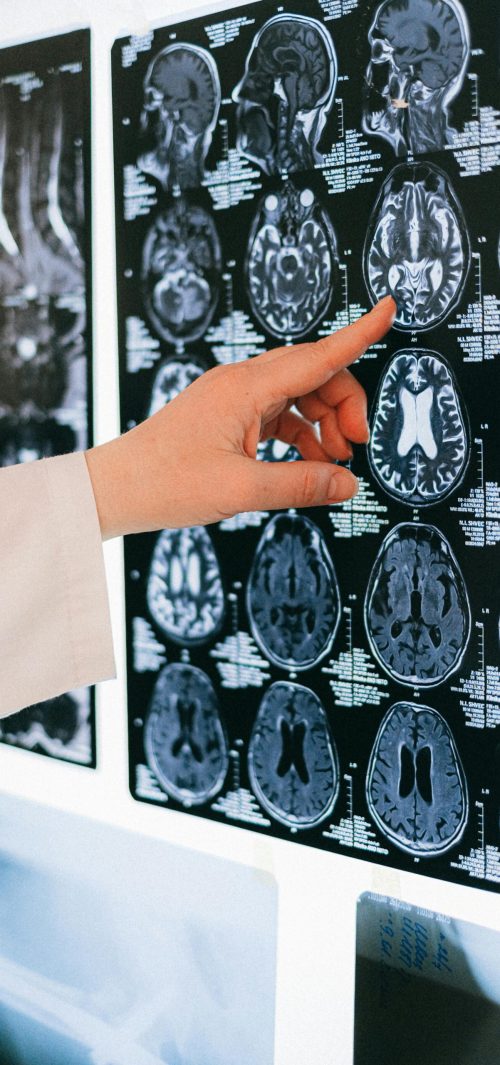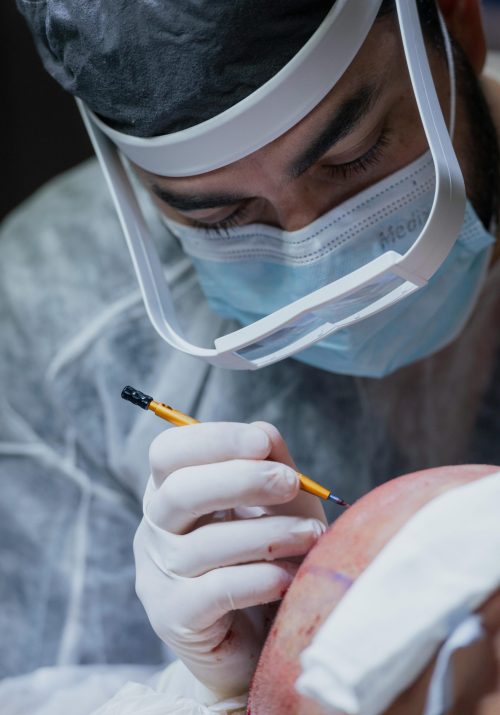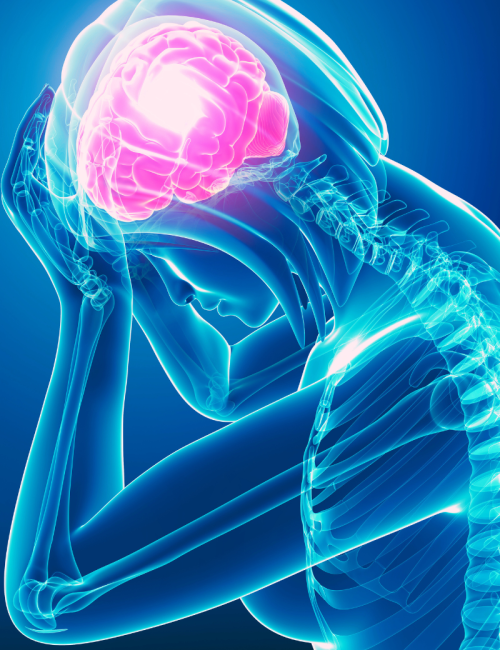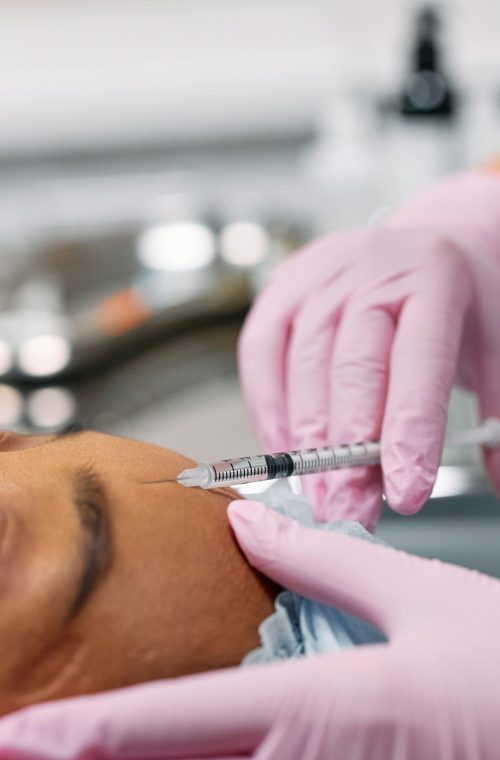Brain Hemorrhage Treatment
A brain tumor is an abnormal increase in the number of cells that make up the brain. Brain Tumors are classified as Primary , where the origin of tumor is from the cells of the brain itself, or Metastatic , where tissue of origin for the tumor lies outside the brain. In India, 5-10 per 100,000 people are affected by brain cancer. The rate of survival depends on many factors like the age of the patient, the type of tumor they have, the stage when it was diagnosed, and if appropriate treatment has been given.
Types of Brain Hemorrhages:
Some types of brain hemorrhages include; epidural hematoma, subdural hematoma, subarachnoid hemorrhage, intracerebral hemorrhage, and intraventricular hemorrhage.
Epidural Hematoma:
In this type of bleeding, blood, which is mainly clotted, accumulates outside the blood vessels. It is commonly developed between the dura mater, an outermost cover for brain tissue, and cranial bone.
Related Treatments
- Brain Tumor Surgery
- Neuro Infections
- Spine Disorders
- Cerebral Palsy
- Dementia Treatment
- Stroke Paralysis
- Brain Hemorrhage Treatment
- Parkinson’s Disease
- Dementia Treatment
Subdural Hematoma:
Here, a hematoma develops between the arachnoid layer, which lies under the dura mater, and the dura mater itself.
Subarachnoid Hemorrhage:
This is when bleeding occurs into the subarachnoid space sandwiched amid the pia mater – i.e., an innermost wrapping of a brain and an arachnoid layer, respectively.
Intracerebral Hemorrhage:
Bleeding takes place right within brain tissue in case of intracerebral hemorrhage.
Intraventricular Hemorrhage:
This category comes about due to bleeding within ventricles located in brains where cerebrospinal fluid is produced.
Symptoms of Brain Hemorrhage:
Sudden Severe Headache:
A sharp intense headache that comes suddenly often referred to as the worst headache ever can be indicative of a brain hemorrhage.
Weakness or Numbness:
Weakness or numbness, mainly on one side of the body, specifically in the face, arm, or leg may show a sign of brain hemorrhage.
Difficulty Speaking or Understanding Speech:
If bleeding affects certain parts of the brain you may have slurred words or problems with spoken language.
Vision Problems:
Blurry vision, double vision, and loss of eyesight in one eye or both can occur in case of a brain hemorrhage.
Loss of Coordination or Balance:
Walking difficulties, dizziness, and unsteadiness may be due to an impact on the brain by blood spilling over it.
Nausea and Vomiting:
Feeling sick in the stomach and throwing up especially when having headaches, and dizziness among other signs might indicate brain hemorrhage.
Seizures:
Uncontrolled shaking fits which can be either partial or generalized can result from irritation by bleeding on the brain tissue.
Loss of consciousness:
Severe cases may lead to loss of consciousness (LOC).coma & even death

Contact Dr. Pranjal Pandey Today
Difference Between Brain Hemorrhage & Stroke

The primary difference between brain hemorrhage and stroke lies in their causes and the nature of the damage they cause to the brain:
Brain Hemorrhage:
Brain hemorrhage occurs when there is bleeding either within or around the brain.
This bleeding may occur due to several factors including head injury, ruptured blood vessels (aneurysm), high blood pressure, or certain medical conditions.
Bleeding can compress the brain tissue leading to its damage and neurological deficits resulting from it.
Stroke:
Stroke occurs when a part of the brain loses blood supply or experiences a reduction in flow causing damage to brain cells due to lack of oxygen and nutrients.
Strokes are mainly classified into two groups:
1) Ischemic strokes
2) Hemorrhagic strokes
Ischemic Stroke:
When a blood clot blocks a blood vessel supplying blood to the brain.
Hemorrhagic Stroke:
This occurs when a ruptured blood vessel causes bleeding inside the brain.
Some factors that can cause stroke include atherosclerosis (build-up of plaque in arteries), hypertension, and arrhythmia such as atrial fibrillation among other cardiovascular diseases
Sudden Neurological Losses like one-sided body weakness/paralysis, speech difficulty & loss of coordination are some possible impacts experienced by patients with stroke attacks.
Both Brain Hemorrhages and strokes cause brain damage but only the former involves bleeding Inside or around the brain while the latter includes conditions that arise from interruption of blood flow to the brain such as ischemic and hemorrhagic strokes.
symptoms for brain hemorrhage
What are the signs of bleeding in the brain?
1. Worsening and/or Severe Headaches
2. Altered Consciousness
3. Visual Complaints such as double vision or blurring of vision
4. Weakness of any half of body or limb
5. Coma
6. Seizures


Some cases of brain hemorrhages can be caused by serious head injuries which may result from:
1. Motor vehicle accidents
2. Falls
3. Injuries associated with games/ sports activities
4. Domestic violence/assault
Moreover, brain hemorrhages can occur spontaneously when blood vessels rupture without antecedent trauma to the head.
The following factors increase the risk of this condition:
1. Aneurysm
2. Amyloid angiopathy is characterized by deposits of amyloid-beta protein in cerebral blood vessels.
3. Hypertension
4. Arteriovenous Malformations
5. Abnormalities in Blood Clotting
6. Brain Tumours
Other factors that contribute to the risk of brain hemorrhage include:
1. Advanced Age
2. Smoking
3. Excessive Consumption of Alcohol Beverages
4. Use of stimulants like heroin, cocaine, or amphetamines.
5. Administration of anticoagulant medications.
6. Excessive Consumption of Alcohol Beverages
Contact Dr. Pranjal Pandey Today
Brain Hemorrhage Treatment in Delhi
Diagnosis:
First, Dr. Prajal Pandey will diagnose and check if you have any symptoms that suggest a brain tumor treatment after performing a series of tests, including MRI and CT scans, to confirm the presence of the tumor and to determine the size of the location.
Treatment planning:
If the reports come positive, then based on the diagnosis, we create a personalized treatment plan that can treat your brain tumor effectively, including surgery, radiation therapy, chemotherapy, or a combination of these treatments. Depending on the stage of the tumor you might be suffering from.
Surgery:
To initiate the treatment and alleviate symptoms caused by pressure on the brain, Dr. Pandey will try to excise the tumor as much as possible.
Radiation therapy:
After surgery to remove any remaining primary cancerous cells in the brain, high-energy beams are utilized to destroy cancer cells.
Chemotherapy:
In case a patient has cancer cells, including those that may be given orally or intravenously with powerful drugs or with other treatments.
Follow-up care:
Patients who have undergone treatment for brain tumors will routinely see Dr. Pranjal Pandey for monitoring of progress and assessment of signs that either suggest recurrence or progression of side effects from treatment
Supportive care:
Supportive care during brain tumor treatment will help you control your symptoms and improve your quality of life.
